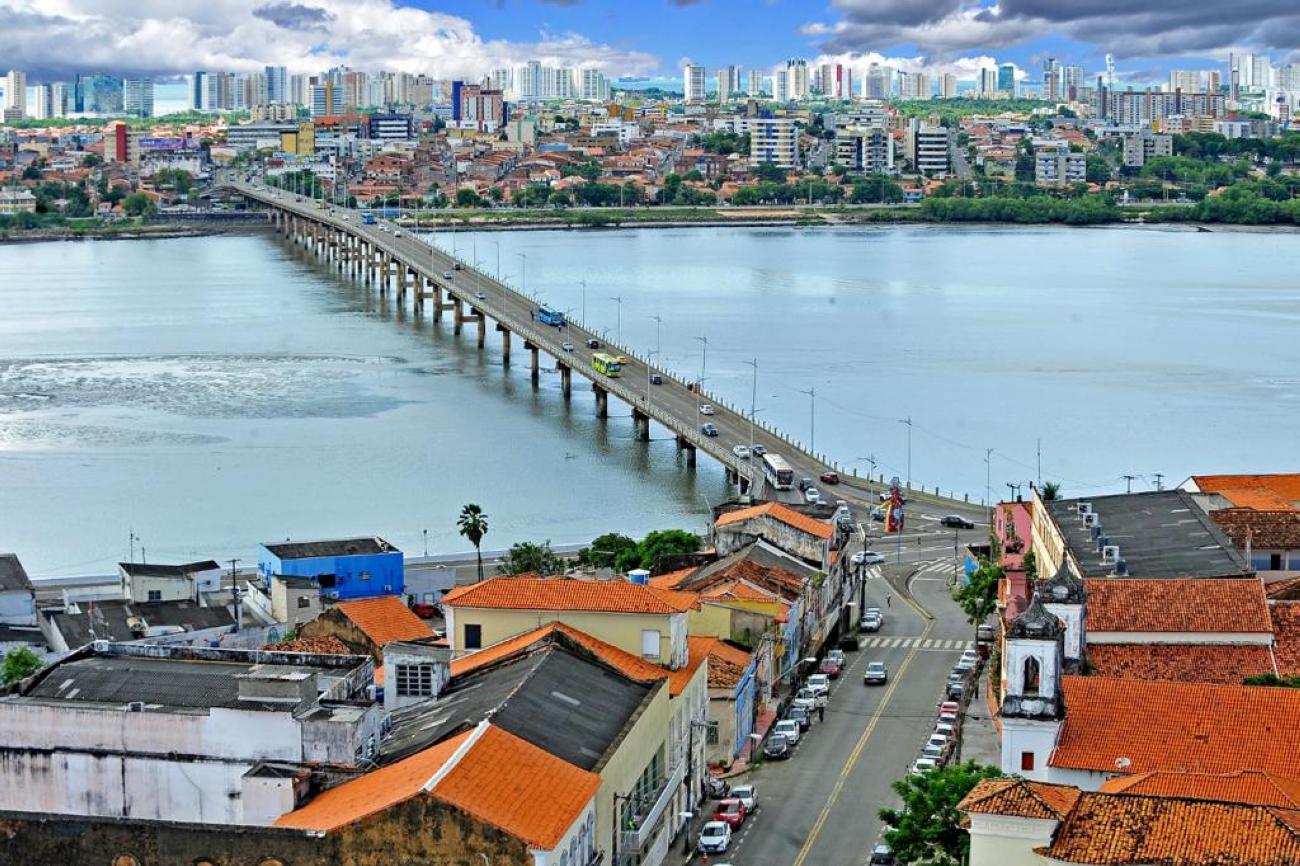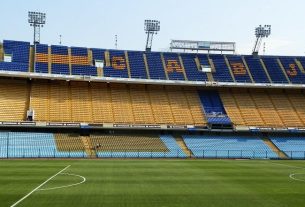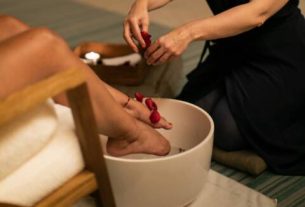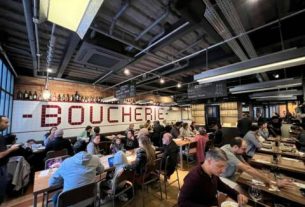Touring the Historic Center is a must for any visitor. There are more than 4 thousand listed buildings that have become cultural heritage due to their tradition. Places such as Palácio dos Leões, Teatro Arthur Azevedo, Convento das Mercês, Beco Catarina Mina and Fonte do Ribeirão are the most visited. Not to mention, of course, the churches with classic architecture such as Igreja do Carmo, Igreja do Desterro and Catedral da Sé. To complete the tour, a little shopping trip, a tasting at typical fairs and restaurants and a swim in the nearby beaches are valid.
Historic center

Photo of the Historic Center, São Luís, MA
Photo Credit: © Ricardo Junior Fotografias.com.br
The historic center brings together more than four thousand properties listed as part of the state’s historical heritage, many of them are on the UNESCO list due to their Portuguese architecture features. The historic center owes what it is today to the French, Portuguese and Spanish who influenced both the architectural contours and the cultural legacy left behind. In almost every 18th and 19th century house you can see the presence of Portuguese tiles. In the region there are numerous museums, churches and public spaces that deserve to be highlighted.
See the photo gallery Historic Center of São Luís
Arthur Azevedo Theater
The theater has a neoclassical and baroque style. It was built in the 19th century by Portuguese traders inspired by Lisbon theater. Despite the time, the theater is still preserved due to restorations. Inside the theater with guided tours it is possible to see the audience area, the boxes, the stage, the dressing rooms, the main hall, galleries and balconies. It is on Rua do Sol.
Palace of Lions
Built by the French in 1612, the building became the headquarters of Portuguese rule. The palace’s rooms remain with French decoration typical of the 18th and 19th centuries. The walls are decorated with paintings from the collection of Arthur Azevedo, a writer from Maranhão, now deceased. The building is not completely open to visitors and may be closed without prior notice if the governor is at an event. It is on Avenida Dom Pedro II.
Mercês Convent
Built in 1657 by Father Antonio Vieira, it underwent restoration and opened for visitors in 2013. The Mercedarian Order was installed in this location in 1905, after which it became the property of the state government. It houses a memorial to former president José Sarney, the Museum of Republican Memory and in July it hosts Vale Festejar, a traditional celebration that takes place every year. It is on Rua da Palma.
Beco Catarina Mina
The section of the alley brings together a mix of colors and a staircase with 35 steps made of lioz stones from the 18th century. The name is a tribute to Catarina, a slave who bought her own manumission. It is on Rua Djalma Dutra.
Ribeirão Fountain
This space is the best preserved among the other mansions. Dating back to 1796, this admirable fountain brings together five jets of water that come out of the mouths of fish and gods represented by giant sculptures.
Churches
The churches located in the Historic Center reflect the entire classic legacy of Maranhão. With Lusitanian architecture from the 17th century, the Sé Cathedral, the Igreja do Carmo and the Igreja do Desterro are postcards of the city.
Sé Cathedral
It was built in honor of Our Lady of Victory. Her image is devoted to being considered the protector of the Portuguese in conflicts against the French army. In 1922 it underwent renovation, and a second tower was built. The neoclassical style, with gold covering and an altar produced by indigenous labor, contributes to the cathedral being so beautiful. It is located in Praça Dom Pedro II.
Carmo Church
Today, the former convent houses a museum with religious art, a classic confessional and rustic stone machines that were used to produce hosts for masses. The place is also the residence of monks. In the mid-17th century the church served as a fort for fighters who fought against the Dutch invasion. Since that time the walls and entrance door have been kept intact, but the tiles were replaced in 1866 due to deterioration. It is located in Praça João Lisboa.
Church of Desterro
This church was built in the same place as the old church in honor of Nossa Senhora do Desterro in the 17th century. It is in Largo do Desterro.
Museums
Historically, there could be no shortage of museums in the capital of Maranhão, since the city represents a strong culture that is a reference throughout Brazil and an undeniable historical legacy coming from the Portuguese, French and Spanish. There are several museums that can be found in the Historic Center, from places that house black culture, to works of art, regional objects and neoclassical architecture.
Historical and Artistic Museum of Maranhão
Full of donated historical objects such as spittoons used to practice the hobby of chewing tobacco and then spitting it out, the wet nurses’ chair that recalls the presence of slaves in the mansion, a wooden dining table, among other artifacts from the century. 19. A manuscript of Aluísio de Azevedo’s writings can be found in the museum. It is on Rua do Sol.
Nhozinho’s house
Known as Nhozinho, artisan Antônio Bruno Pinto Nogueira is one of the most important artists in Maranhão. He was known for his work on buriti carving and for being a pioneer in representing the Bumba Meu Boi festival in a miniature version. He worked until he was 70 years old when he died from a degenerative disease that had already left him blind in one eye. To this day, he is respected by the entire population of Maranhão, which led to the creation of Casa de Nhozinho in honor of the artist. The collection brings together regional artifacts such as giant dolls, looms and fishing utensils. Visits are guided. It is on Rua Portugal.
Popular Culture Center
Also called Casa da Festa, a name justified by the collection that houses clothing, costumes and objects used in popular and religious celebrations such as Candomblé, Umbanda, Creole Drum, Mina Drum, Festa do Divino and Carnival that take place every year in the region. and bring together hundreds of participants. The mansion has four floors. It is on Rua do Giz.
Cafua das Mercês
Also called the Black Museum because it is a former slave warehouse, this museum today portrays the history of black people through objects from the slavery period, such as objects of torture and works of art that refer to that time and the suffering of black people. It is on Rua Jacinto Maia.
Museum of Visual Arts
Visits to this museum are guided. The place holds an incredible exhibition of Portuguese, English, French and even German tiles from the 18th to 20th centuries. Paintings by Brazilian artists are also highlighted in the museum, as well as some pieces of religious art. The inviting environment houses a viewpoint overlooking São Marcos Bay and a privileged view of Praia Grande Market and the Historic Center. It is on Rua Portugal.
Maranhão House
Former Customs Building from 1873, this museum houses objects, clothing and musical instruments used during the Bumba Meu Boi festival. It also includes a video room that shows explanatory documentaries about Maranhão culture. It is on Rua do Trapiche.
Vasconcelos Solar Historic Center
This exhibition center is located in an old townhouse and reflects the evolution of the Historic Center in recent years. It also brings together miniatures of boats from the town of Maranhão. It is on Rua da Estrela.
Museum of Sacred Art
Called Solar do Barão de Grajaú, its entire facade is covered in typically Portuguese tiles. The townhouse built in the 19th century houses mannerist, baroque, rococo and neoclassical sacred images. It is divided into two floors. It is on Rua Treze de Maio.

Sign up for our newsletter and stay up to date with exclusive news
that can transform your routine!
Warning: Undefined array key "title" in /home/storelat/public_html/wp-content/plugins/link-whisper-premium/templates/frontend/related-posts.php on line 12
Warning: Undefined array key "title_tag" in /home/storelat/public_html/wp-content/plugins/link-whisper-premium/templates/frontend/related-posts.php on line 13




